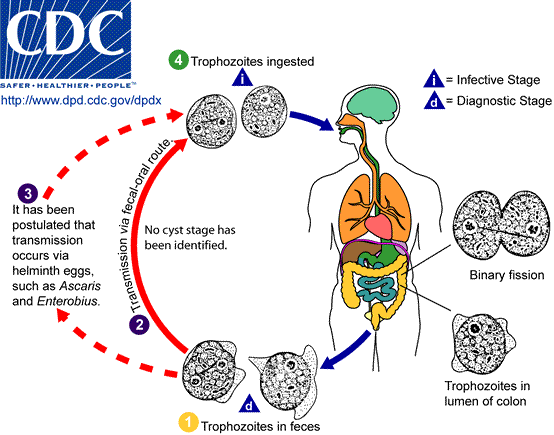| |
The complete life
cycle of this parasite has not yet been determined, but assumptions were
made based on clinical data. To date, the cyst stage has not been
identified in D. fragilis life cycle, and the trophozoite is the only
stage found in stools of infected individuals
 . D.
fragilis is probably transmitted by fecal-oral route . D.
fragilis is probably transmitted by fecal-oral route
 and transmission
via helminth eggs (e.g., Ascaris, Enterobius spp.) has been
postulated and transmission
via helminth eggs (e.g., Ascaris, Enterobius spp.) has been
postulated  .
Trophozoites of D. fragilis have characteristically one or two nuclei
( .
Trophozoites of D. fragilis have characteristically one or two nuclei
( , ,
 ), and it is
found in children complaining of intestinal (e.g., intermittent diarrhea,
abdominal pain) and other symptoms (e.g., nausea, anorexia, fatigue,
malaise, poor weight gain). ), and it is
found in children complaining of intestinal (e.g., intermittent diarrhea,
abdominal pain) and other symptoms (e.g., nausea, anorexia, fatigue,
malaise, poor weight gain). |
|
